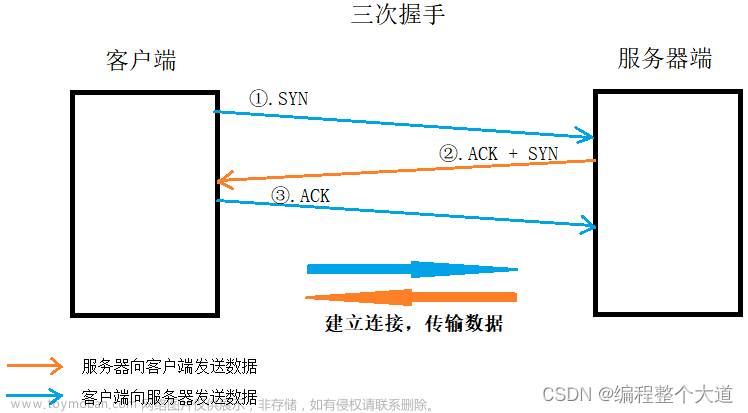URI (uniform resource identifier)统一资源标志符;
URL(uniform resource location )统一资源定位符(或统一资源定位器);
URI是一个相对来说更广泛的概念,URL是URI的一种,是URI命名机制的一个子集,可以说URI是抽象的,而具体要使用URL来定位资源。
URI指向的一般不是物理资源路径,而是整个系统中的映射后的资源标识符。
URL是Internet上用来描述信息资源的字符串,主要用在各种WWW客户程序和服务器程序上。采用URL可以用一种统一的格式来描述各种信息资源,包括文件、服务器的地址和目录等。
一.先来序言一段
我们习惯了http
URL url=new URL("http://www.apptest.com:8080/test/ios.php");
我们也要习惯
"https", "ftp", "mailto", "telnet", "file", "ldap", "gopher", "jdbc", "rmi", "jndi", "jar", "doc", "netdoc", "nfs", "verbatim", "finger", "daytime",
"systemresource"
当然,我们还要让URL习惯我们
URL url=new URL("oschina://www.apptest.com:8080/test/ios.php");
如果不习惯,总会出现如下异常
java.net.MalformedURLException: unknown protocol
在Android浏览器使用Ajax时也会不支持没有定义的过的协议。
二.协议的自定义的理解
协议:在编程的世界里,协议本身就是一套Input/ouput约束规则,因此,我们确切的协议应该围绕I/O展开的,所以,这里的协议可以称为I/O协议。
协议发起方:request
协议响应方:response
协议成立的条件是:request和reponse认可同一套协议,并按照协议约束进行通信。
三.自定义协议与URL的关系
在java中,自定义协议一定需要用URL吗?
答案是否定的。
事实上,围绕I/O,我们的规则定义完全有我们本身掌握,并没有说离开URL地球不转了,Java要毁灭了。
为什么使用URL类来自定义协议?
答案是因为URL是一套成熟的协议通信处理框架。
这里说的自定义URL协议,实质上更多的是通过已有的规则进行扩充协议。
四.URL自定义私有协议实战
我们知道,自定义协议需要Response 和Request,双方需要充理解对方的协议。这里为了方便起见,我们使用Http协议服务器来作为Response。
这里我们使用了Ngnix服务器+PHP+FastCGI来构建Reponse,部署代码如下
1.定义Response
<?php
$raw_post_data = file_get_contents('php://input', 'r');
echo "-------\$_POST------------------\n<br/>";
echo var_dump($_POST) . "\n";
echo "-------php://input-------------\n<br/>";
echo $raw_post_data . "\n<br/>";
$rs = json_encode($_SERVER);
file_put_contents('text.html',$rs);
echo '写入成功';
2.定义Request
2.1实现URLStreamHandlerFactory工厂,主要用来产生协议处理器
public class EchoURLStreamHandlerFactory implements URLStreamHandlerFactory {
public URLStreamHandler createURLStreamHandler(String protocol){
//通过这里的分流处理不同的schema请求,当然脑残人士认为这里才是核心代码,URL是一套协议处理框架,如果if-else就是核心,是不是oracle要倒闭
if(protocol.equals("echo") || protocol.equals("oschina"))
{
return new EchoURLStreamHandler(); //实例化协议处理Handler
}
return null;
}
}
2.2实现URLStreamHandler,主要作用是生成协议对应的连接器
public class EchoURLStreamHandler extends URLStreamHandler {
@Override
protected URLConnection openConnection(URL u) throws IOException {
return new EchoURLConnection(u); //在这里我们也可以进行相应的分流
}
}
2.3 实现URLConnection,作用是协议通信规则的自定义,这里我们使用HTTP协议作为通信规则,我们这里仿制http协议请求
(以下才是核心代码,这里借用的http协议,当然你可以用websocket,smtp,ftp各种协议进行交互,而不是脑残人士让我承认的 if-else+URL前缀)
public class EchoURLConnection extends URLConnection {
private Socket connection = null;
public final static int DEFAULT_PORT = 80;
public EchoURLConnection(URL url) {
super(url);
}
public synchronized InputStream getInputStream() throws IOException {
if (!connected) {
connect();
}
return connection.getInputStream();
}
public synchronized OutputStream getOutputStream() throws IOException {
if (!connected) {
connect();
}
return connection.getOutputStream();
}
public String getContentType() {
return "text/plain";
}
public synchronized void connect() throws IOException {
if (!connected) {
int port = url.getPort();
if (port < 0 || port > 65535)
port = DEFAULT_PORT;
this.connection = new Socket(url.getHost(), port);
// true表示关闭Socket的缓冲,立即发送数据..其默认值为false
// 若Socket的底层实现不支持TCP_NODELAY选项,则会抛出SocketException
this.connection.setTcpNoDelay(true);
// 表示是否允许重用Socket所绑定的本地地址
this.connection.setReuseAddress(true);
// 表示接收数据时的等待超时时间,单位毫秒..其默认值为0,表示会无限等待,永远不会超时
// 当通过Socket的输入流读数据时,如果还没有数据,就会等待
// 超时后会抛出SocketTimeoutException,且抛出该异常后Socket仍然是连接的,可以尝试再次读数据
this.connection.setSoTimeout(30000);
// 表示当执行Socket.close()时,是否立即关闭底层的Socket
// 这里设置为当Socket关闭后,底层Socket延迟5秒后再关闭,而5秒后所有未发送完的剩余数据也会被丢弃
// 默认情况下,执行Socket.close()方法,该方法会立即返回,但底层的Socket实际上并不立即关闭
// 它会延迟一段时间,直到发送完所有剩余的数据,才会真正关闭Socket,断开连接
// Tips:当程序通过输出流写数据时,仅仅表示程序向网络提交了一批数据,由网络负责输送到接收方
// Tips:当程序关闭Socket,有可能这批数据还在网络上传输,还未到达接收方
// Tips:这里所说的"未发送完的剩余数据"就是指这种还在网络上传输,未被接收方接收的数据
this.connection.setSoLinger(true, 5);
// 表示发送数据的缓冲区的大小
this.connection.setSendBufferSize(1024);
// 表示接收数据的缓冲区的大小
this.connection.setReceiveBufferSize(1024);
// 表示对于长时间处于空闲状态(连接的两端没有互相传送数据)的Socket,是否要自动把它关闭,true为是
// 其默认值为false,表示TCP不会监视连接是否有效,不活动的客户端可能会永久存在下去,而不会注意到服务器已经崩溃
this.connection.setKeepAlive(true);
// 表示是否支持发送一个字节的TCP紧急数据,socket.sendUrgentData(data)用于发送一个字节的TCP紧急数据
// 其默认为false,即接收方收到紧急数据时不作任何处理,直接将其丢弃..若用户希望发送紧急数据,则应设其为true
// 设为true后,接收方会把收到的紧急数据与普通数据放在同样的队列中
this.connection.setOOBInline(true);
// 该方法用于设置服务类型,以下代码请求高可靠性和最小延迟传输服务(把0x04与0x10进行位或运算)
// Socket类用4个整数表示服务类型
// 0x02:低成本(二进制的倒数第二位为1)
// 0x04:高可靠性(二进制的倒数第三位为1)
// 0x08:最高吞吐量(二进制的倒数第四位为1)
// 0x10:最小延迟(二进制的倒数第五位为1)
this.connection.setTrafficClass(0x04 | 0x10);
// 该方法用于设定连接时间,延迟,带宽的相对重要性(该方法的三个参数表示网络传输数据的3项指标)
// connectionTime--该参数表示用最少时间建立连接
// latency---------该参数表示最小延迟
// bandwidth-------该参数表示最高带宽
// 可以为这些参数赋予任意整数值,这些整数之间的相对大小就决定了相应参数的相对重要性
// 如这里设置的就是---最高带宽最重要,其次是最小连接时间,最后是最小延迟
this.connection.setPerformancePreferences(2, 1, 3);
this.connected = true;
StringBuilder sb = new StringBuilder();
sb.append("POST " + url.getPath() + " HTTP/1.1 \r\n");
if(url.getPort()<0 || url.getPort()>65536)
{
sb.append("Host:").append(url.getHost()).append("\r\n");
}else{
sb.append("Host:").append(url.getHost()).append(":").append(url.getPort()).append("\r\n");
}
sb.append("Connection:keep-alive\r\n");
sb.append("Date:Fri, 22 Apr 2016 13:17:35 GMT\r\n");
sb.append("Vary:Accept-Encoding\r\n");
sb.append("Content-Type: application/x-www-form-urlencoded,charset=utf-8\r\n");
sb.append("Content-Length: ").append("name=zhangsan&password=123456".getBytes("UTF-8").length).append("\r\n");
sb.append("\r\n");
this.connection.getOutputStream().write(sb.toString().getBytes("UTF-8"));
}
}
public synchronized void disconnect() throws IOException {
if (connected) {
this.connection.close();
this.connected = false;
}
}
}
在这里,协议定义已经完成。
我们测试代码如下
尝试连接 oschina://localhost:8080/test/ios.php
URL.setURLStreamHandlerFactory(new EchoURLStreamHandlerFactory());
// URLConnection.setContentHandlerFactory(new EchoContentHandlerFactory());
URL url=new URL("oschina://localhost:8080/test/ios.php");
EchoURLConnection connection=(EchoURLConnection)url.openConnection();
connection.setDoOutput(true);
connection.setDoInput(true);
PrintWriter pw = new PrintWriter(new OutputStreamWriter(connection.getOutputStream()));
pw.write("name=zhangsan&password=123456");
pw.flush();
InputStream stream = connection.getInputStream();
int len = -1;
byte[] buf = new byte[256];
while((len=stream.read(buf, 0, 256))>-1)
{
String line = new String(buf, 0, len);
if(line.endsWith("\r\n0\r\n\r\n")&&len<256)
{
//服务器返回的是Transfer-chunked编码,\r\n0\r\n\r\n表示读取结束了,chunked编码解析:http://dbscx.iteye.com/blog/830644
line = line.substring(0, line.length()-"\r\n0\r\n\r\n".length());
System.out.println(line);
break;
}else{
System.out.println(line);
}
}
pw.close();
stream.close();
运行结果
结果说明,协议确实定义成功了
当然,如上数据解析不符合我们的要求,因为是chunked编码信息,如何解析符合要求有,请移步:
HTTP Chunked数据编码与解析算法
我们可以通过如下方式解析数据
URL.setURLStreamHandlerFactory(new EchoURLStreamHandlerFactory());
// URLConnection.setContentHandlerFactory(new EchoContentHandlerFactory());
URL url=new URL("oschina://localhost:8080/test/ios.php");
EchoURLConnection connection=(EchoURLConnection)url.openConnection();
connection.setDoOutput(true);
connection.setDoInput(true);
PrintWriter pw = new PrintWriter(new OutputStreamWriter(connection.getOutputStream()));
pw.write("name=zhangsan&password=123456");
pw.flush();
InputStream stream = connection.getInputStream();
HttpInputStream his = new HttpInputStream(stream);
System.out.println(his.getHttpHeaders());
int len = 0;
byte[] buf = new byte[127];
StringBuilder sb = new StringBuilder();
while((len=his.read(buf, 0, buf.length))!=-1)
{
sb.append(new String(buf, 0, len));
}
System.out.println(sb.toString());
五.后话,自定义mineType解析器
java中提供了ContentHandlerFactory,用来解析mineType,我们这里制定我们自己的解析器,当然,JDK中提供的更丰富,这里所做的只是为了符合特殊需求
public class EchoContentHandlerFactory implements ContentHandlerFactory{
public ContentHandler createContentHandler(String mimetype){
if(mimetype.equals("text/html") || mimetype.equals("text/plain")){
return new EchoContentHandler();
}else{
return null;
}
}
}
public class EchoContentHandler extends ContentHandler {
public Object getContent(URLConnection connection) throws IOException {
InputStream in = connection.getInputStream();
BufferedReader br = new BufferedReader(new InputStreamReader(in));
return br.readLine();
}
public Object getContent(URLConnection connection, Class[] classes) throws IOException {
InputStream in = connection.getInputStream();
for (int i = 0; i < classes.length; i++) {
if (classes[i] == InputStream.class)
return in;
else if (classes[i] == String.class)
return getContent(connection);
}
return null;
}
}
用法很简单
URLConnection.setContentHandlerFactory(new EchoContentHandlerFactory());
作者:IamOkay文章来源:https://www.toymoban.com/news/detail-835453.html
原文地址:https://my.oschina.net/ososchina/blog/664743文章来源地址https://www.toymoban.com/news/detail-835453.html
到了这里,关于Java URL自定义私有网络协议的文章就介绍完了。如果您还想了解更多内容,请在右上角搜索TOY模板网以前的文章或继续浏览下面的相关文章,希望大家以后多多支持TOY模板网!










